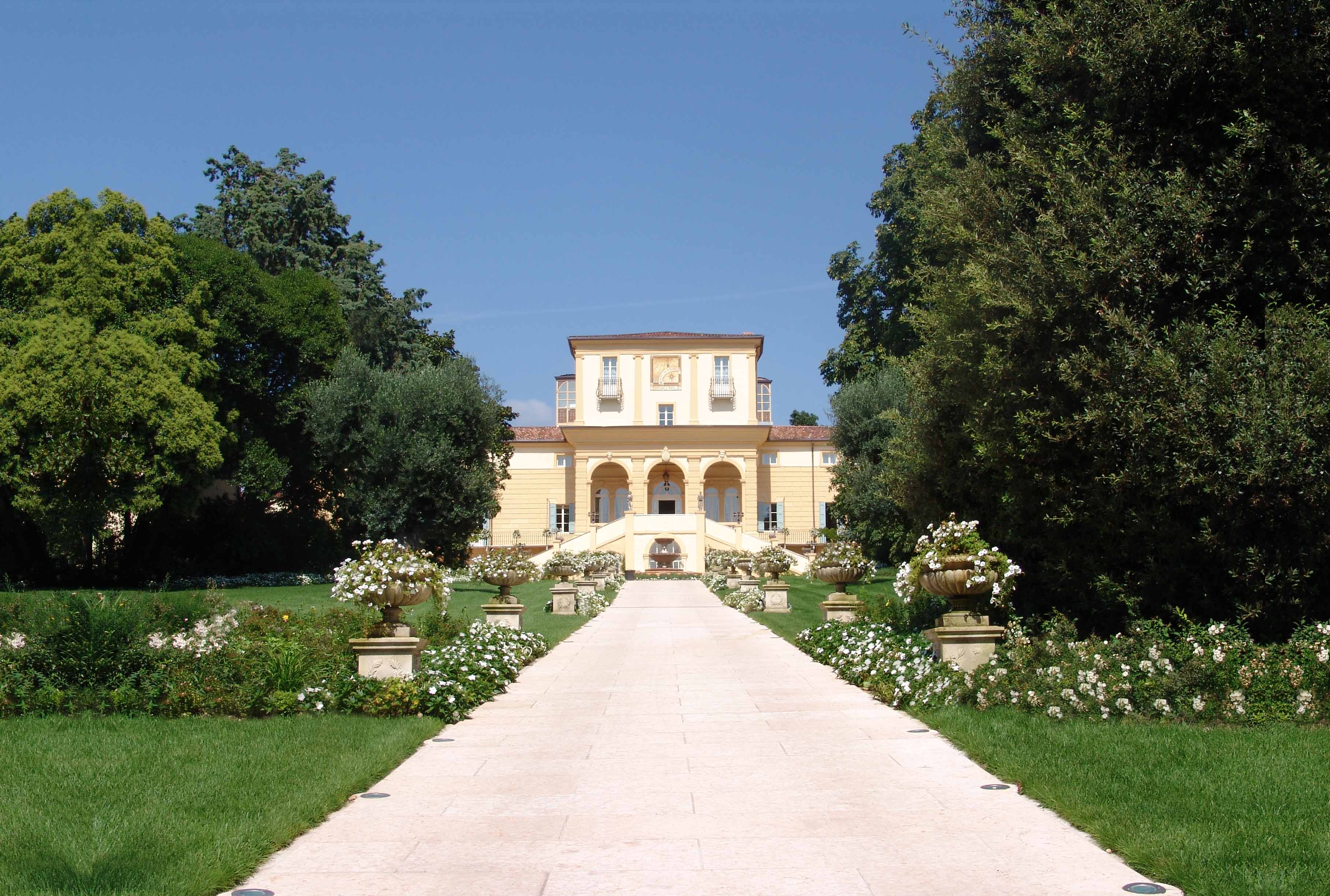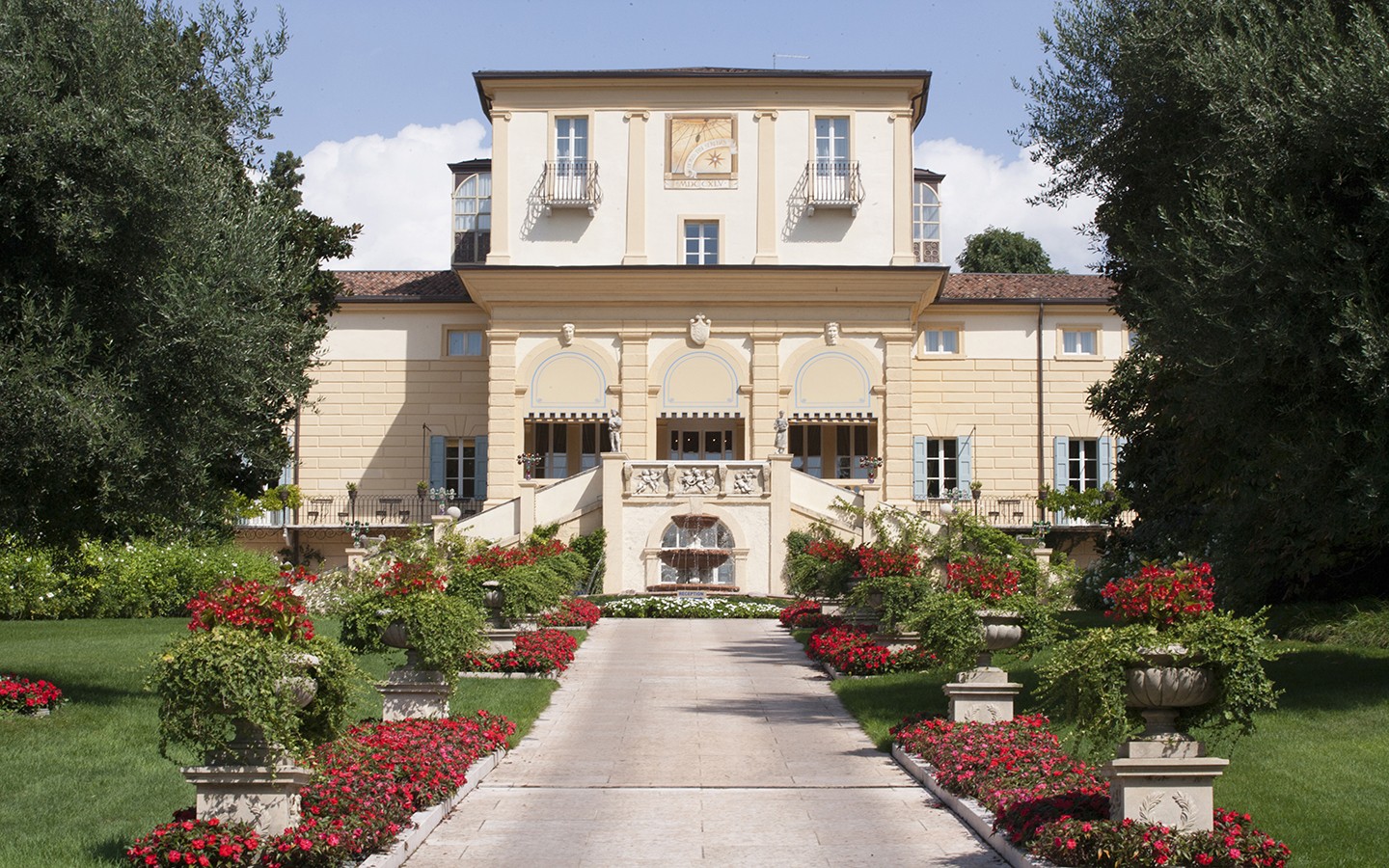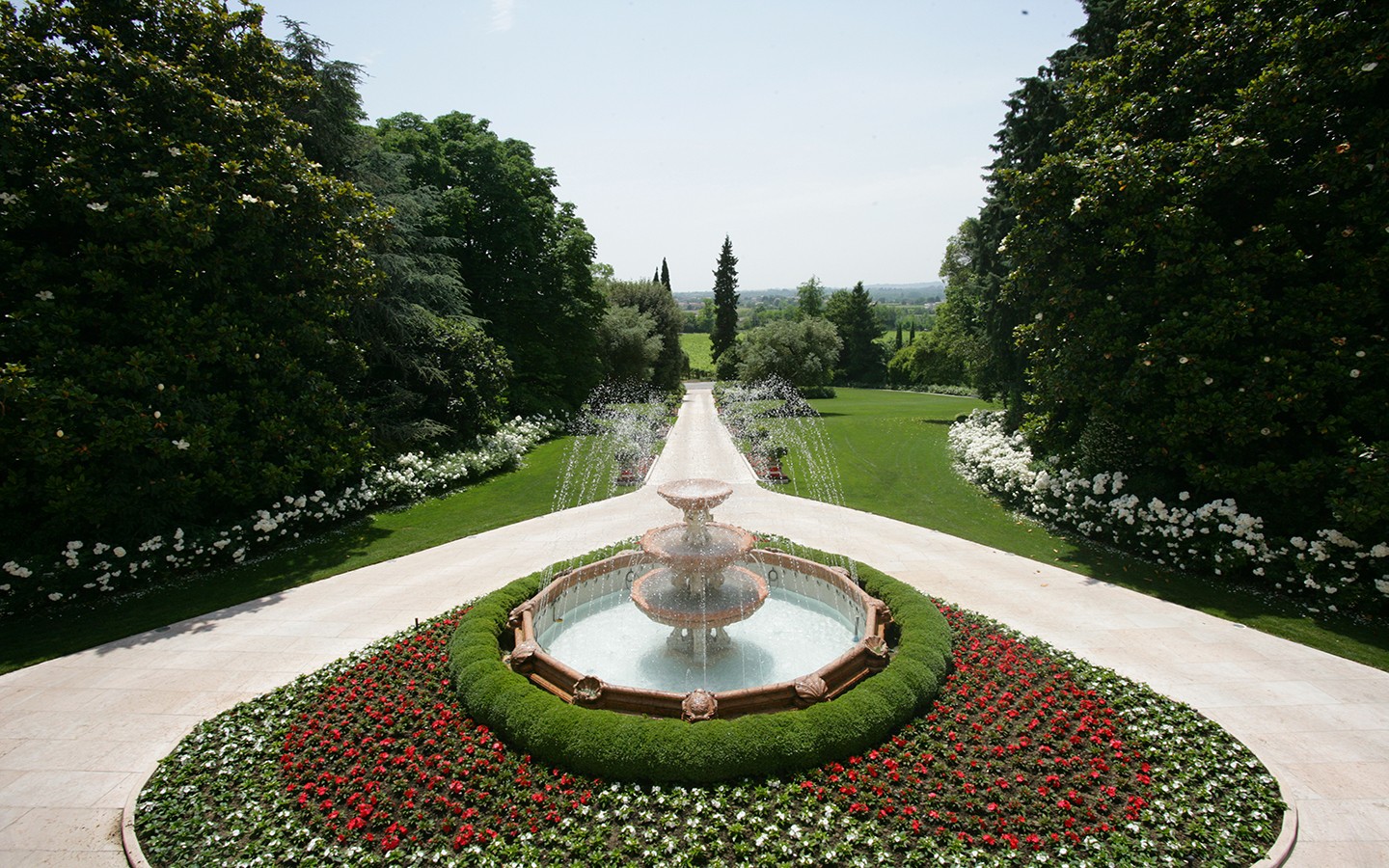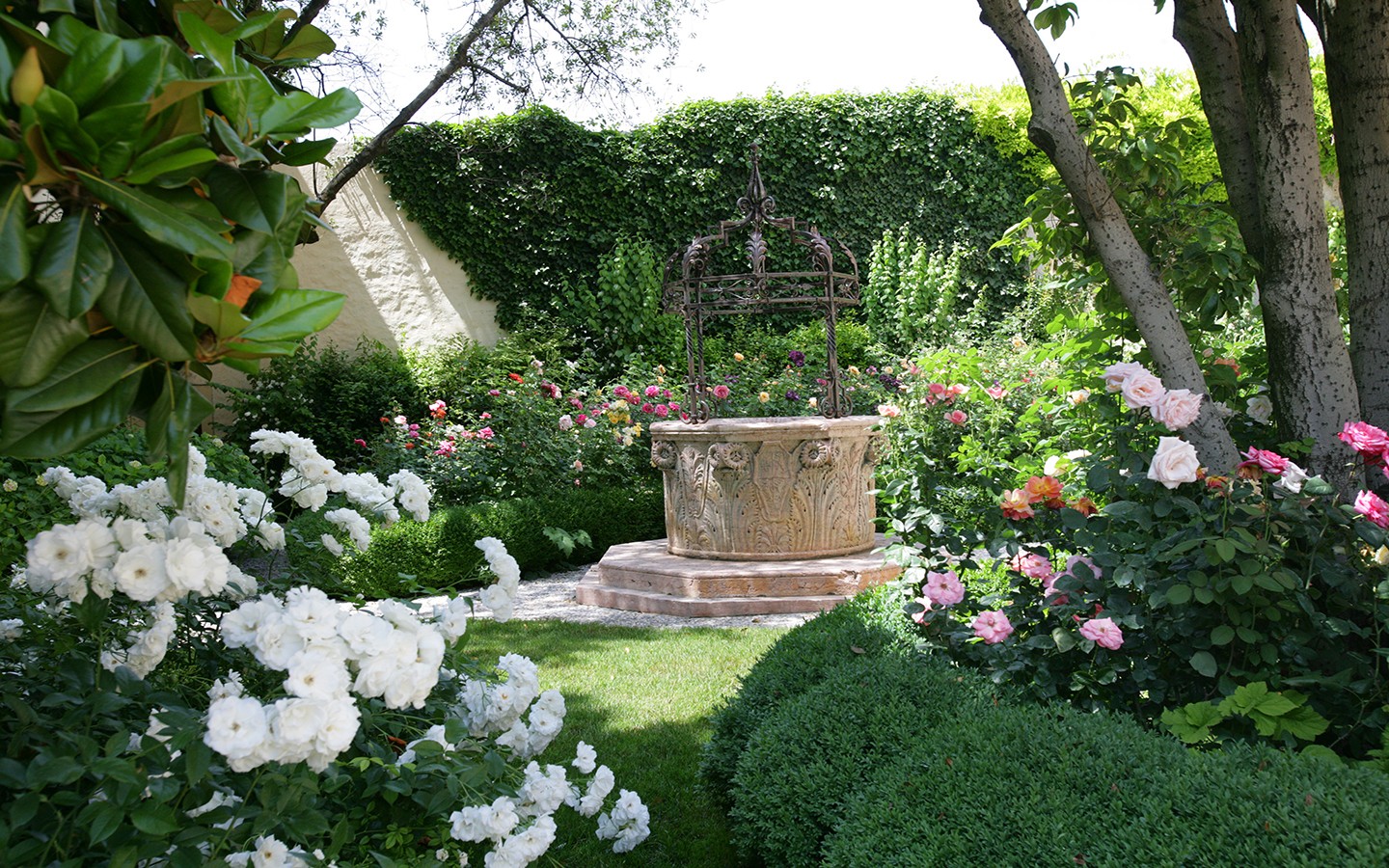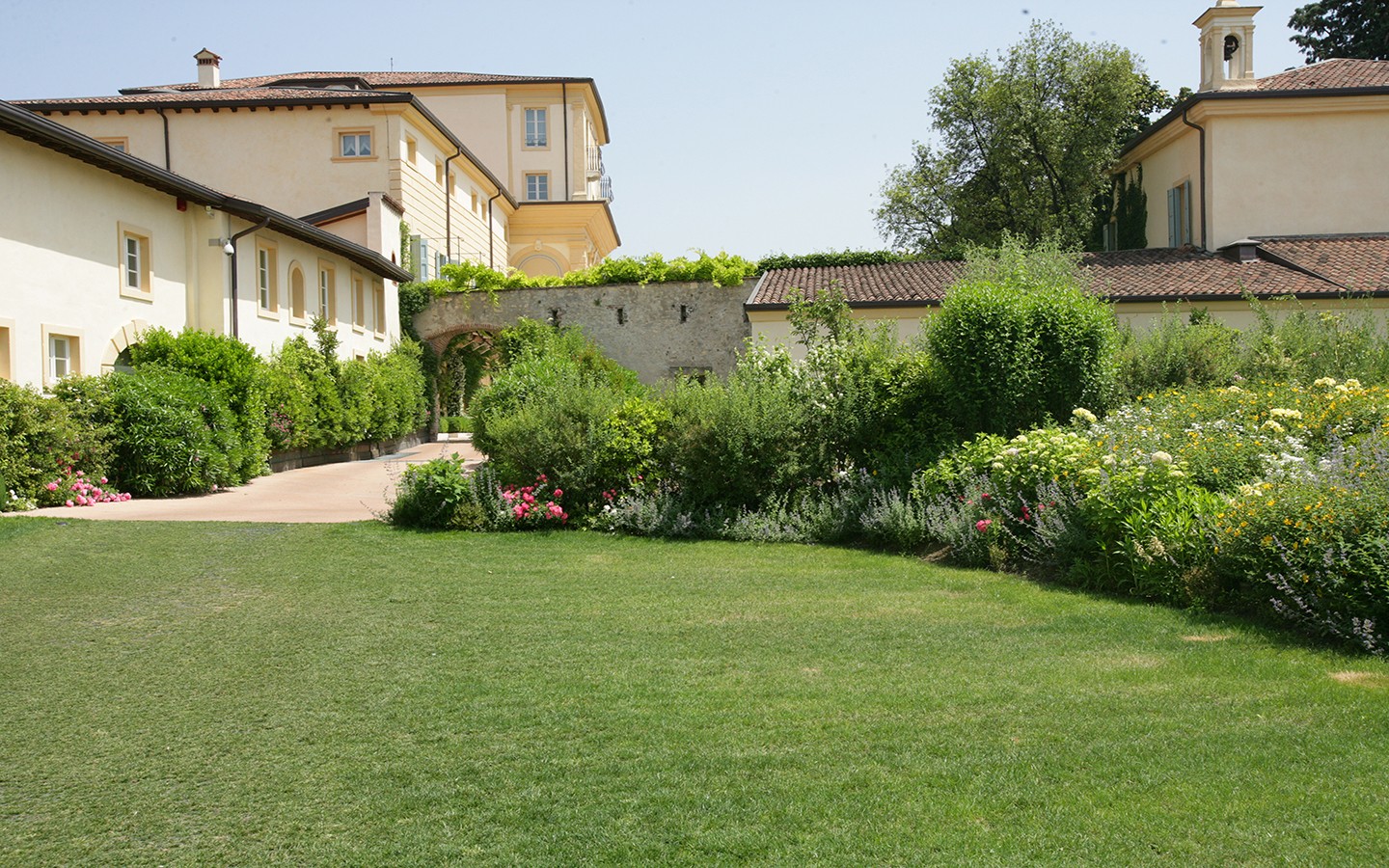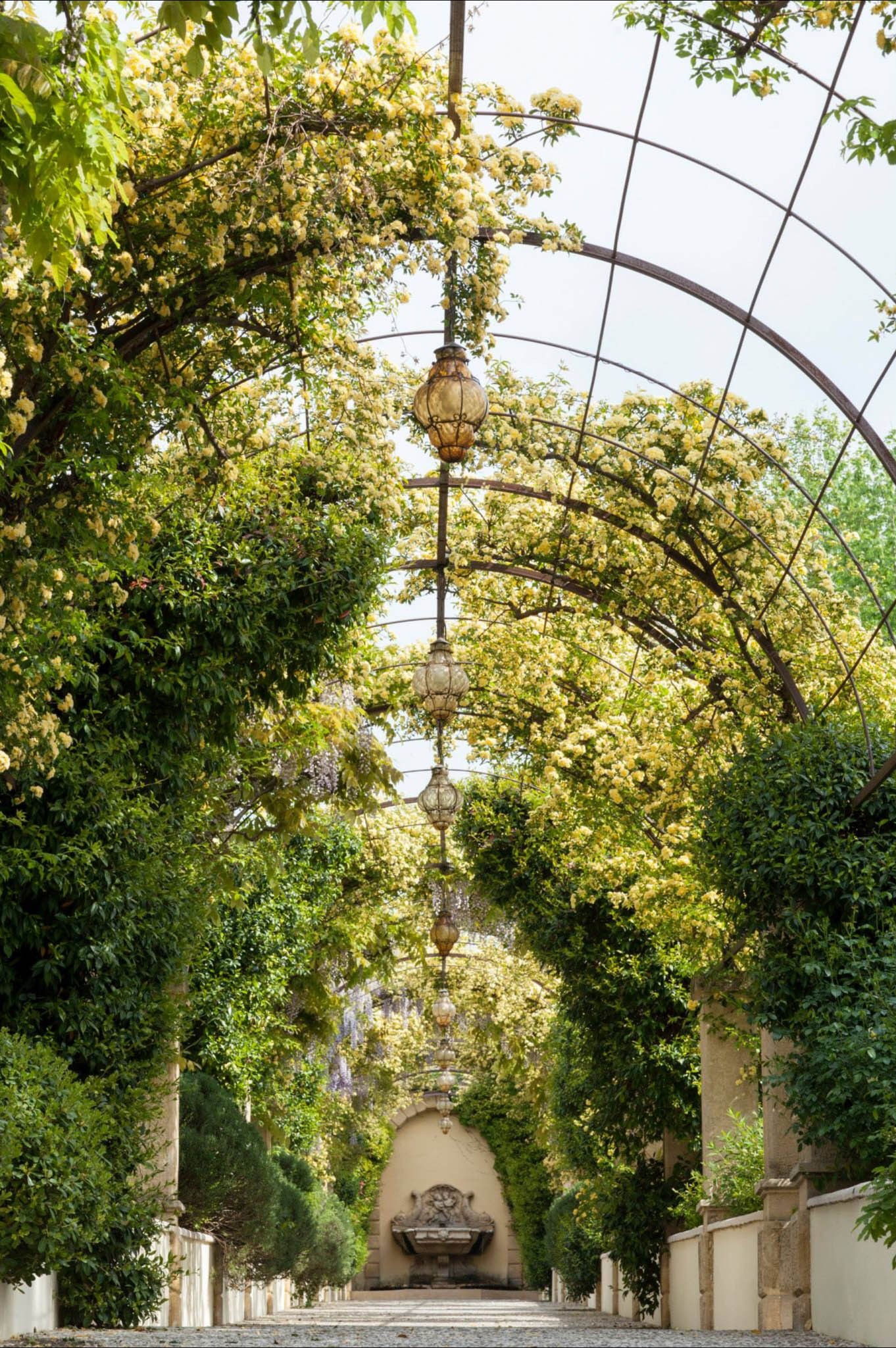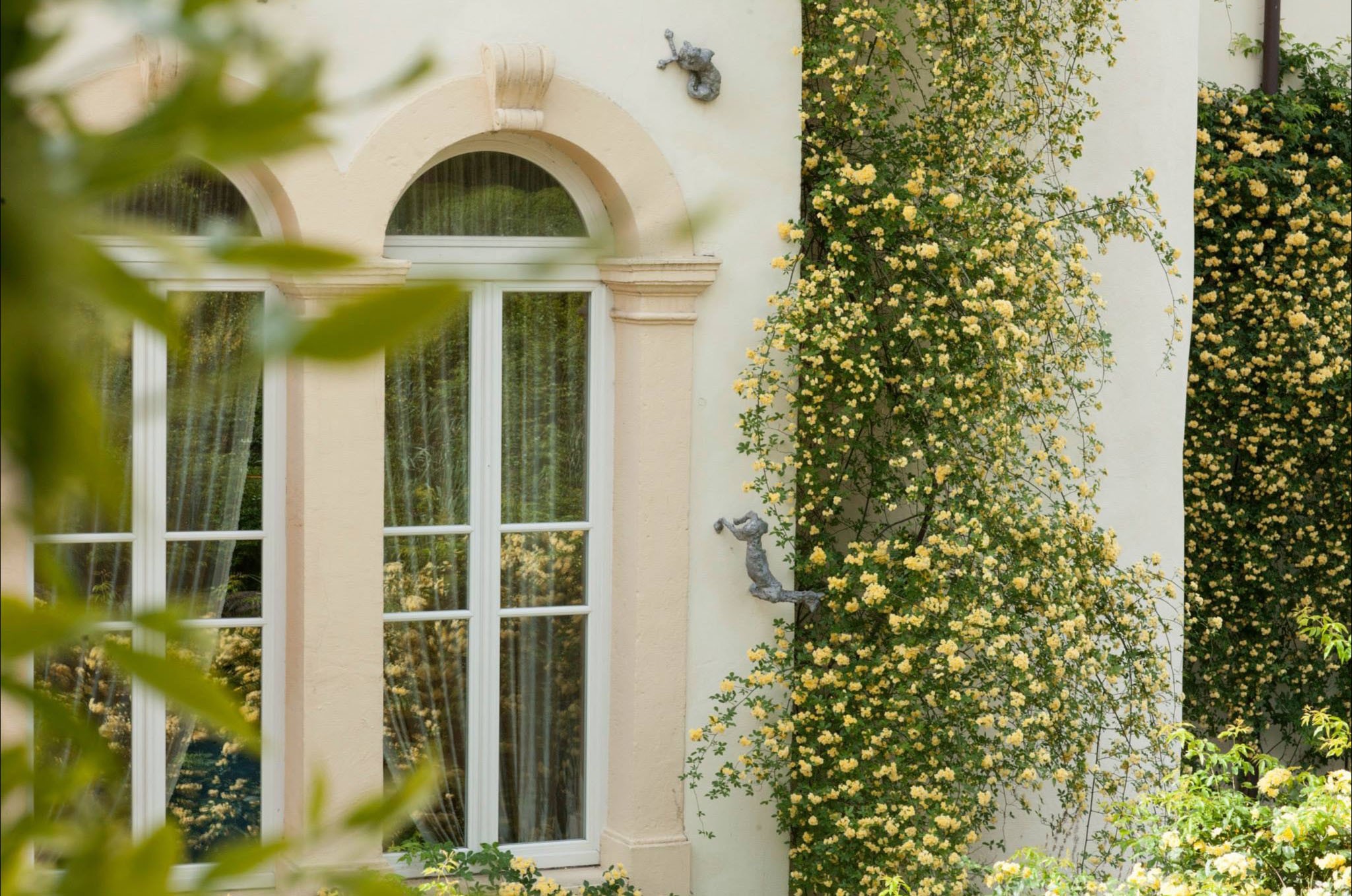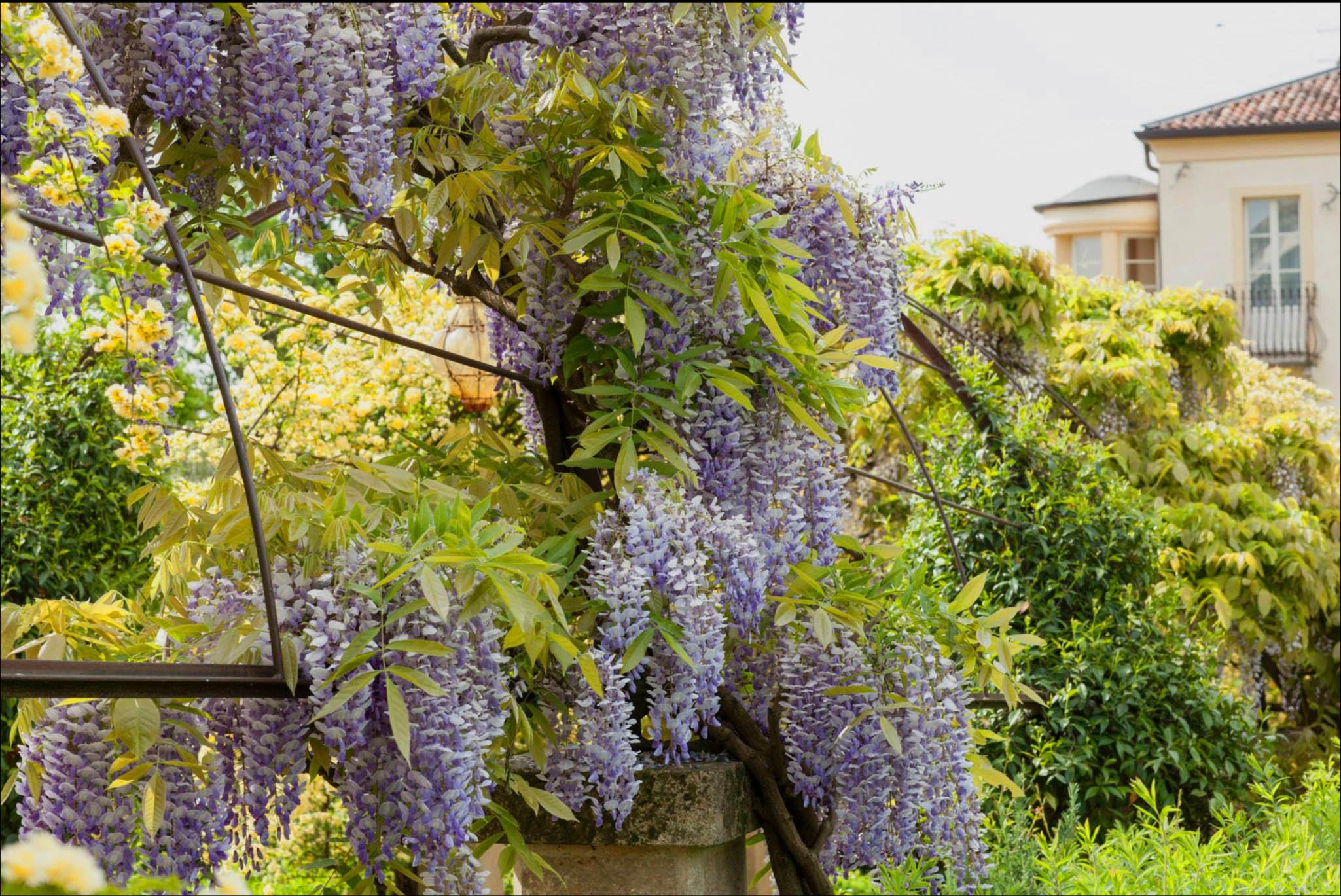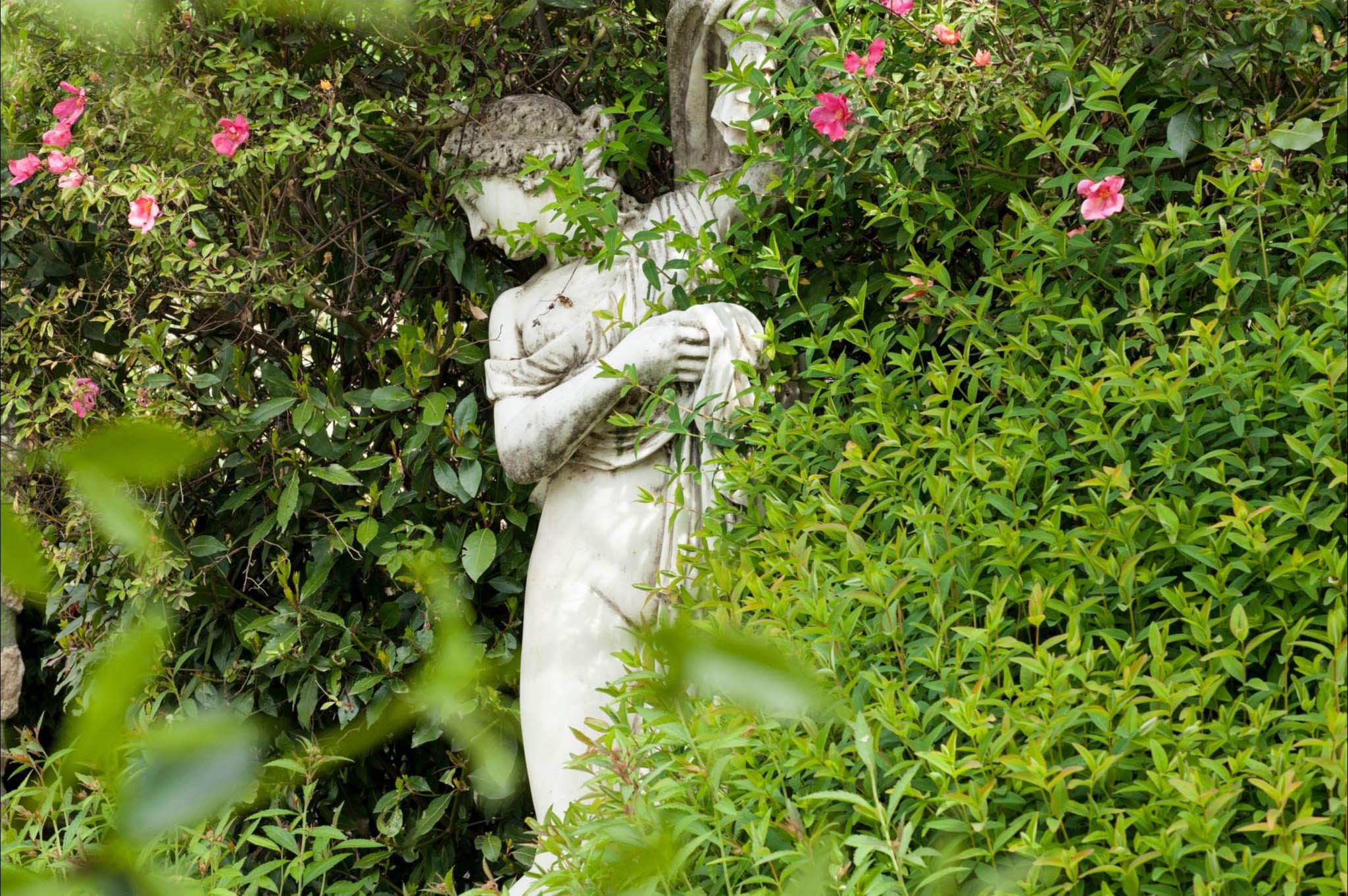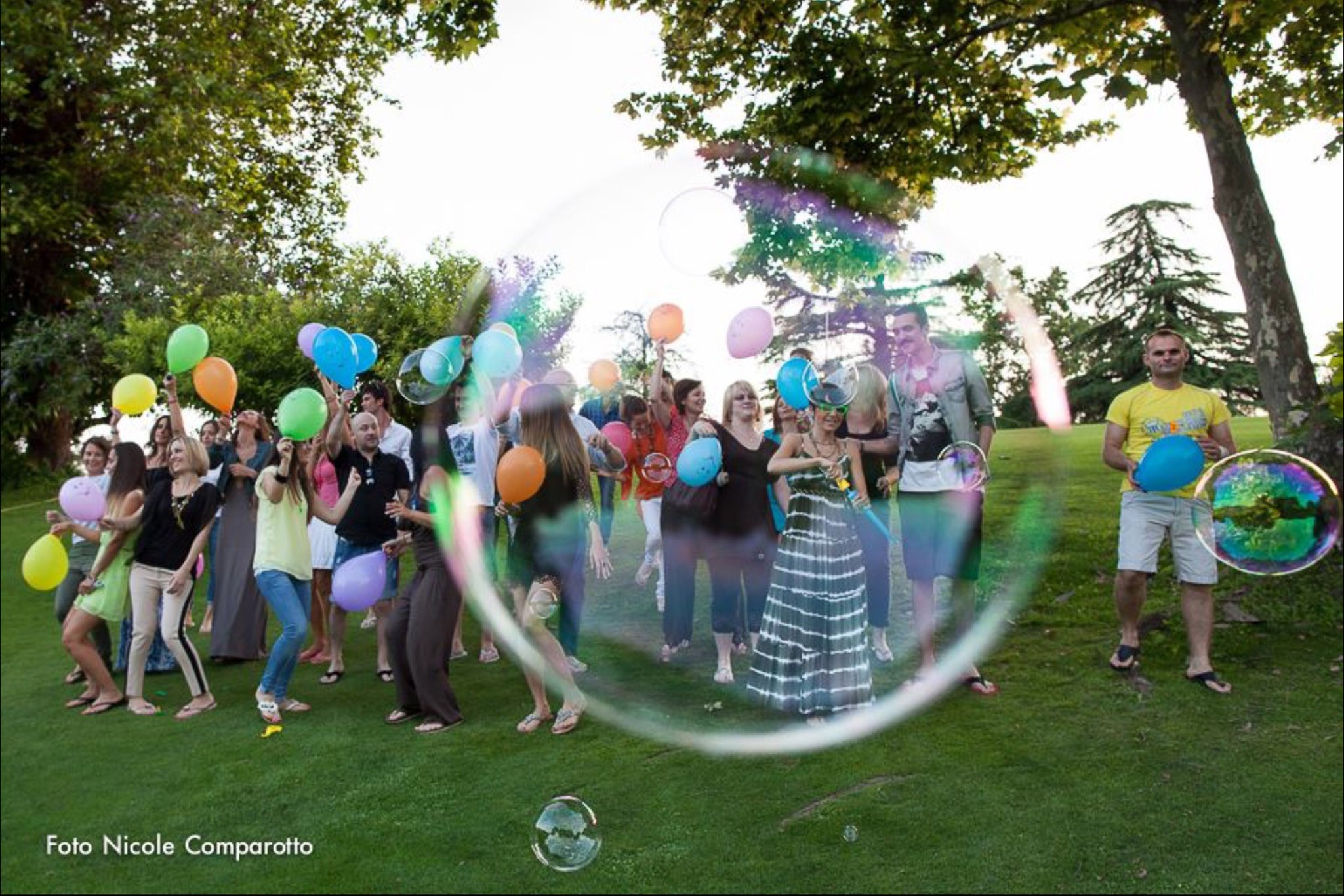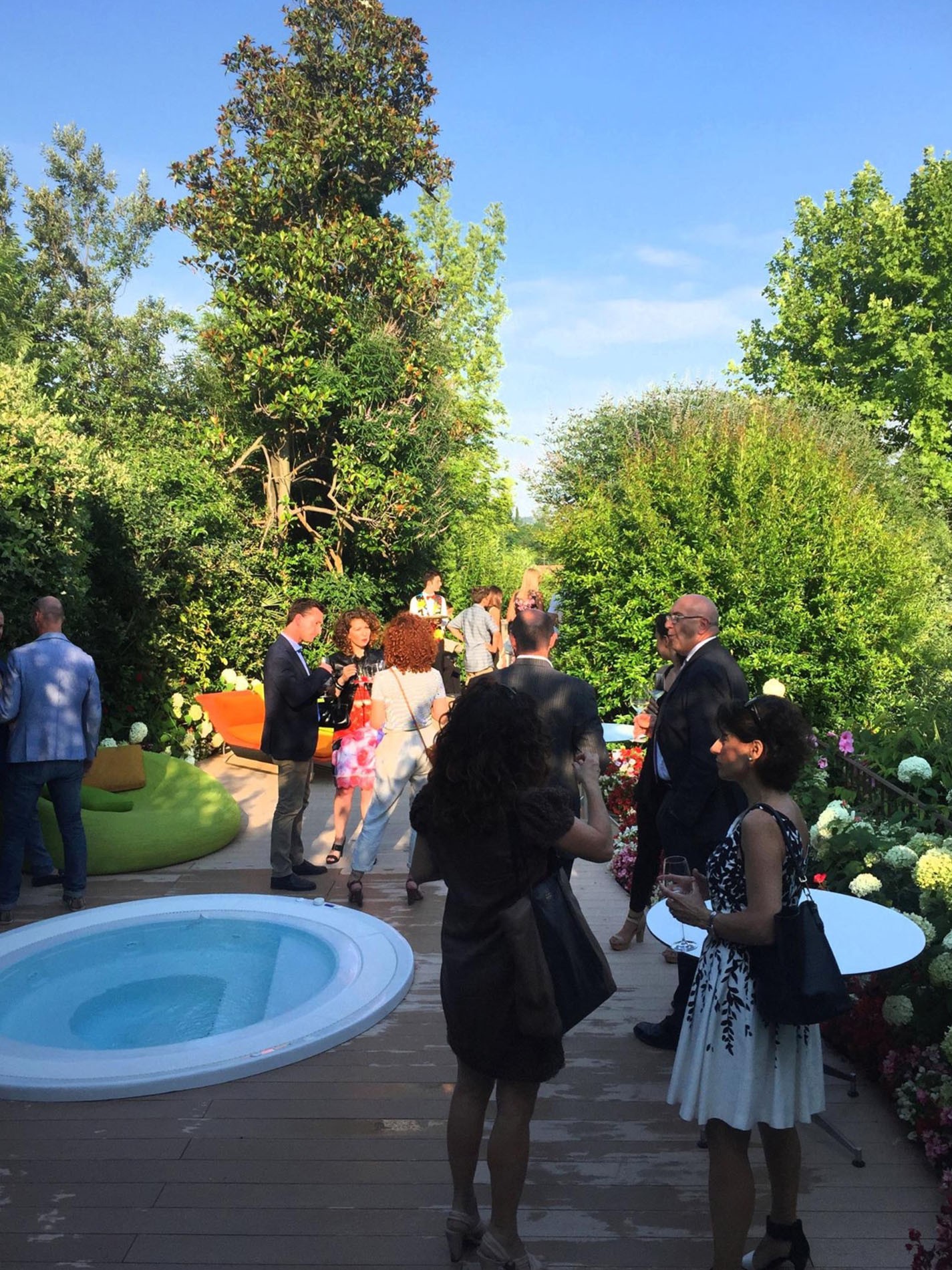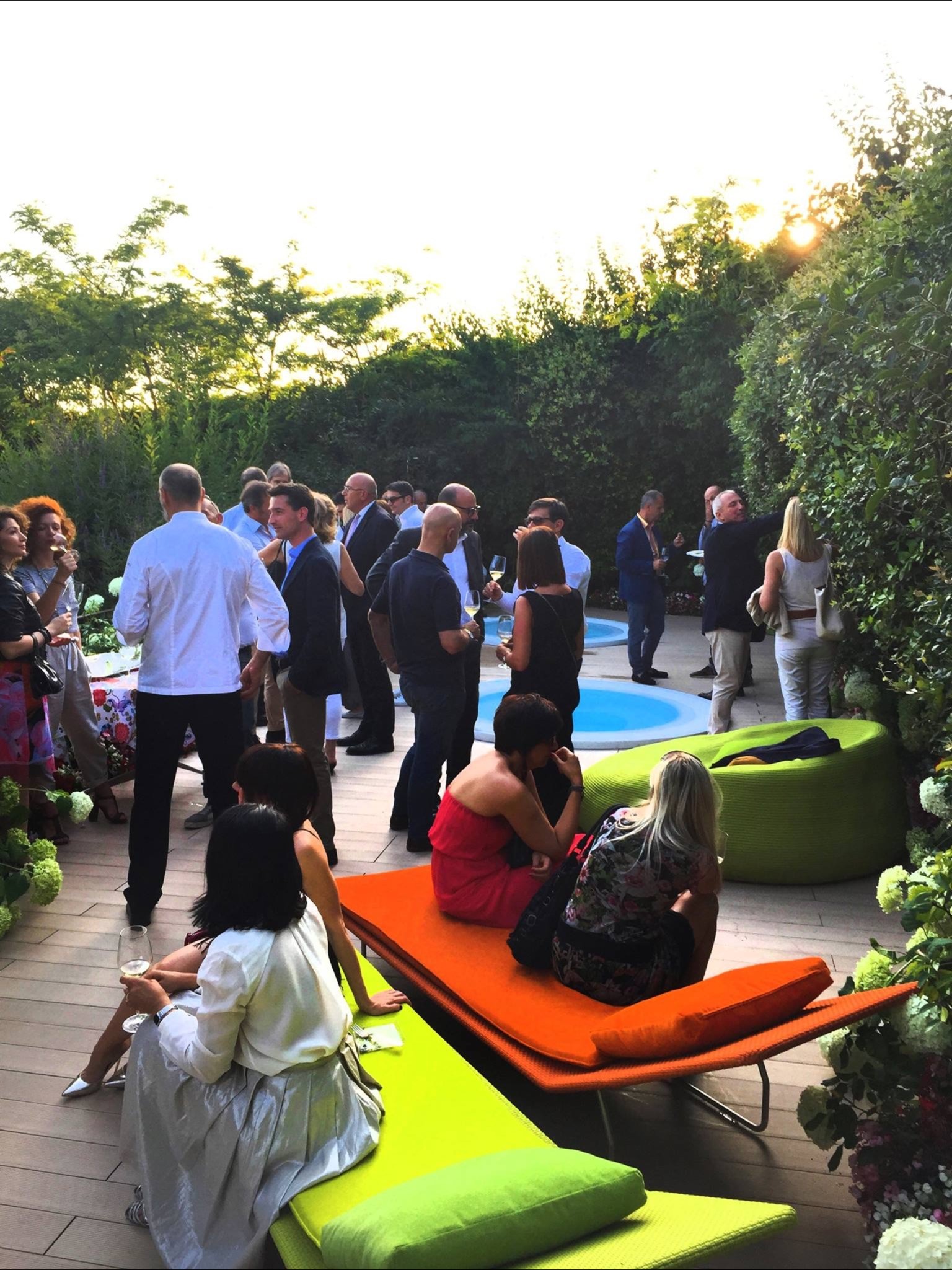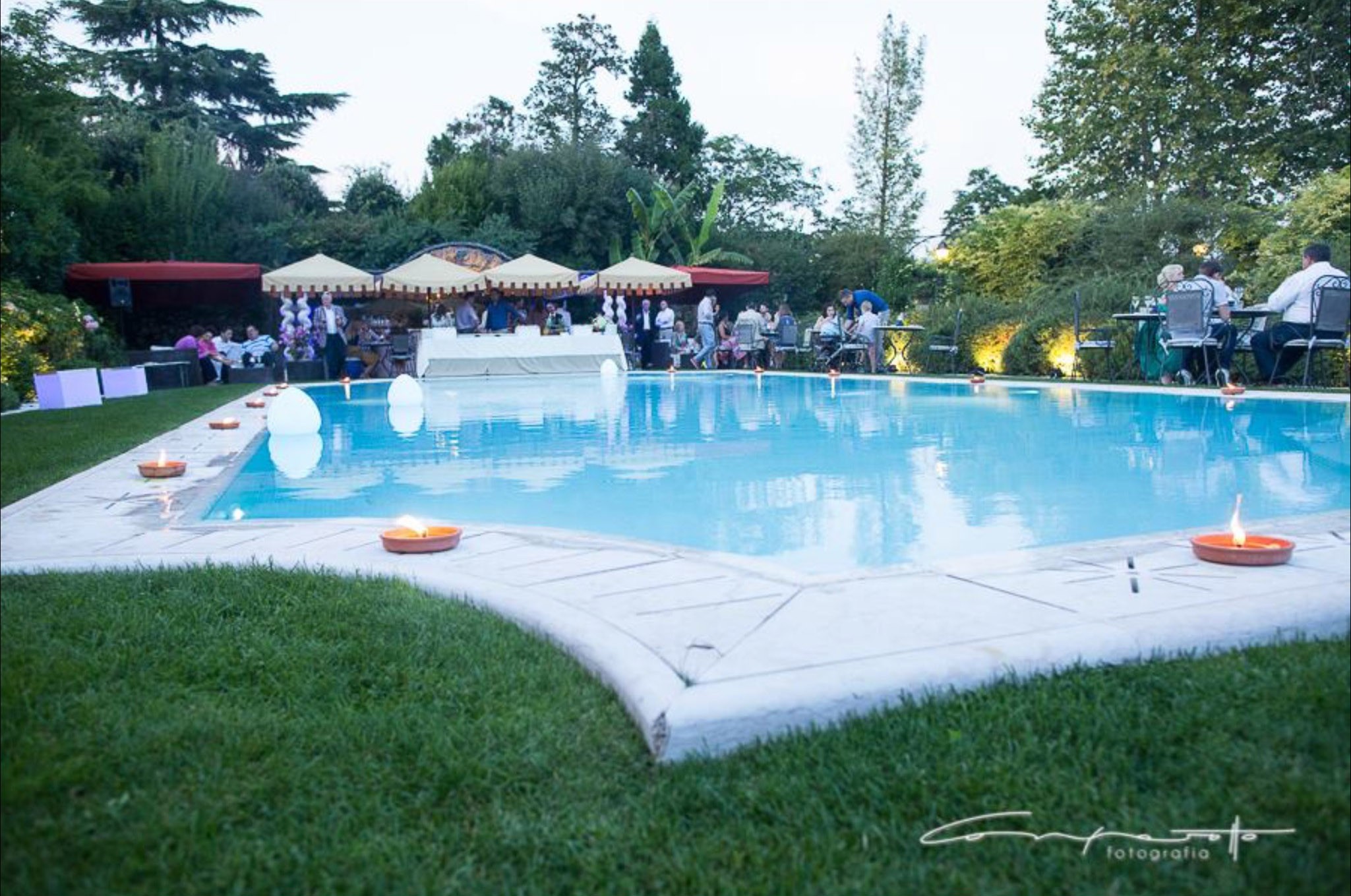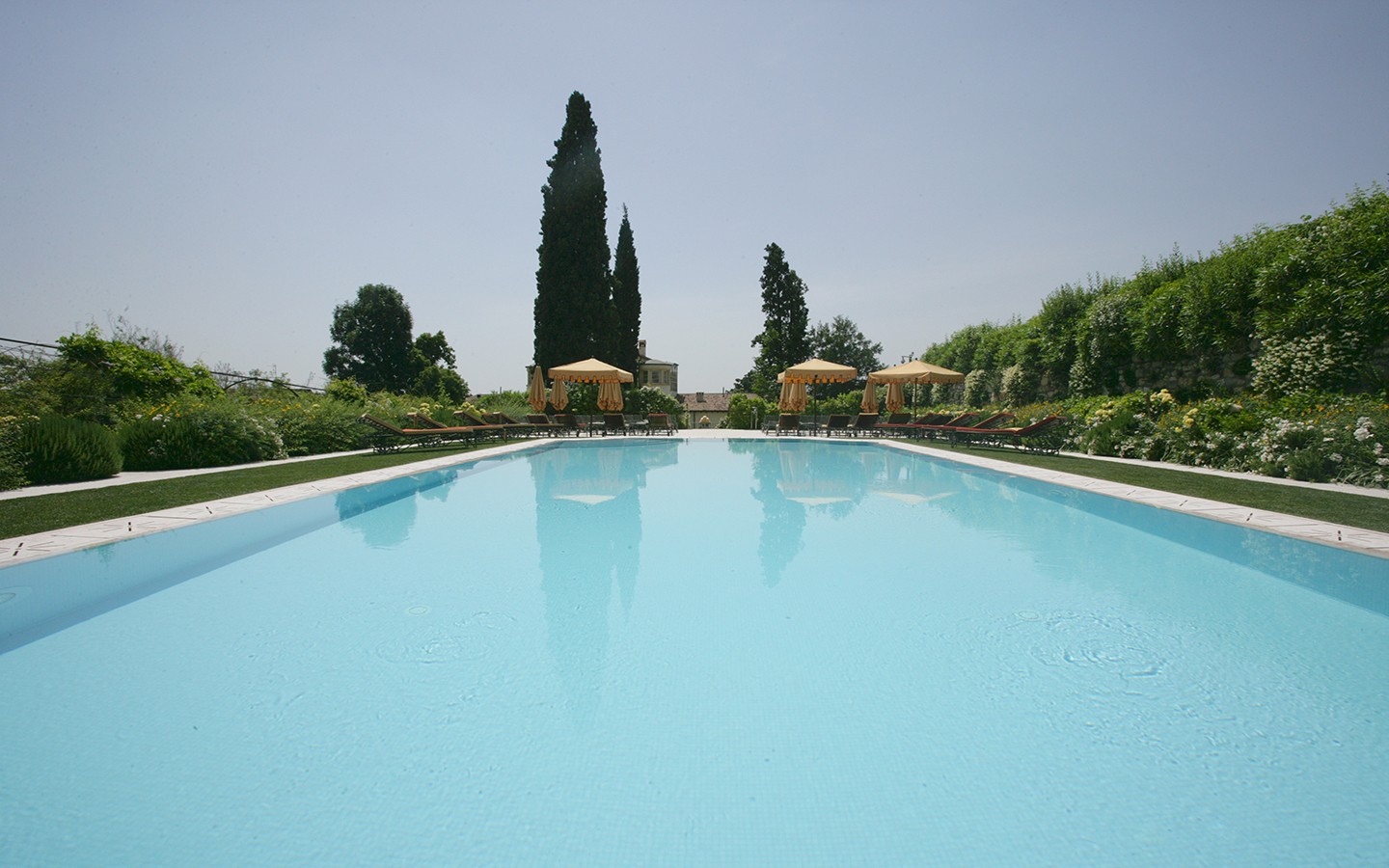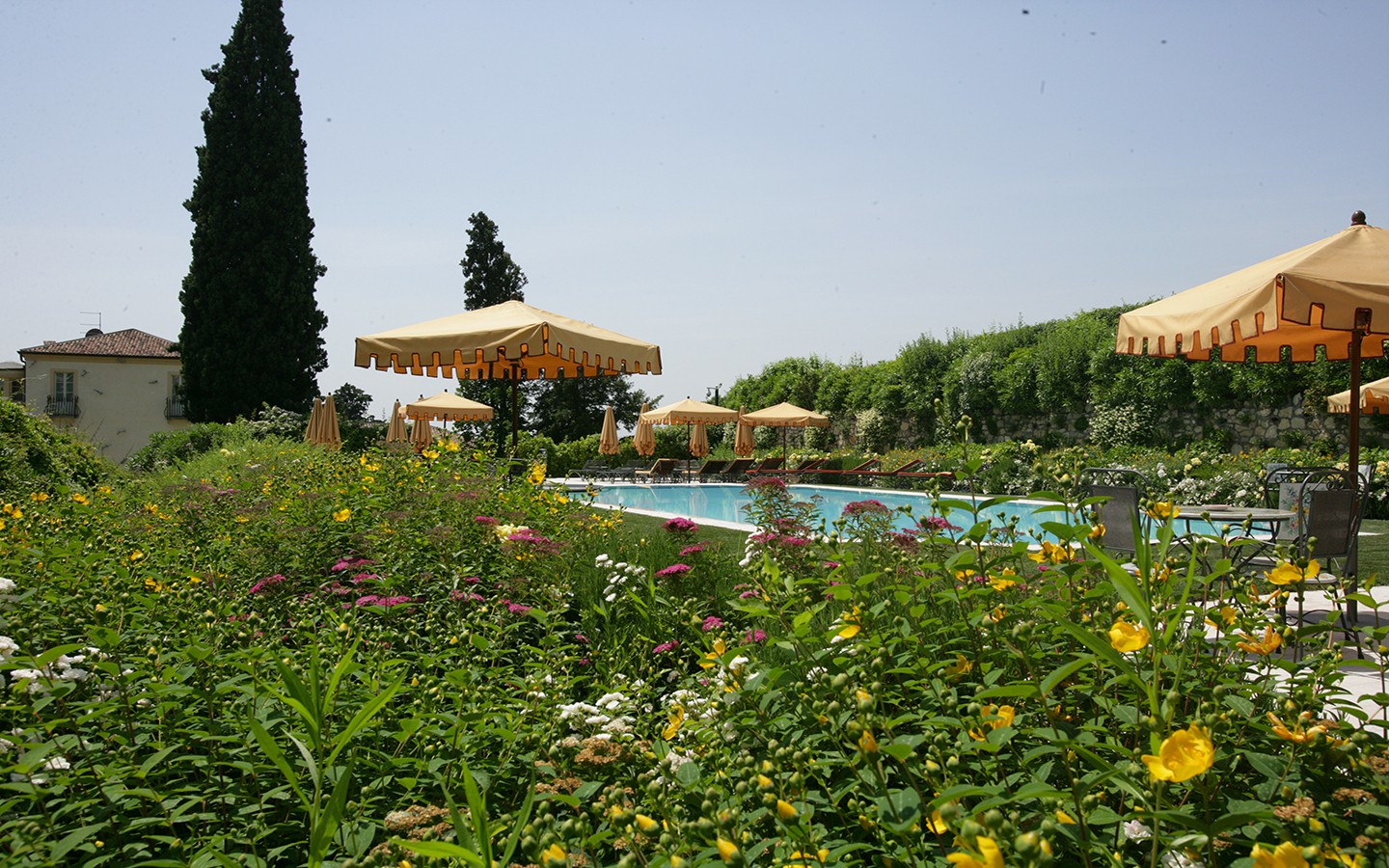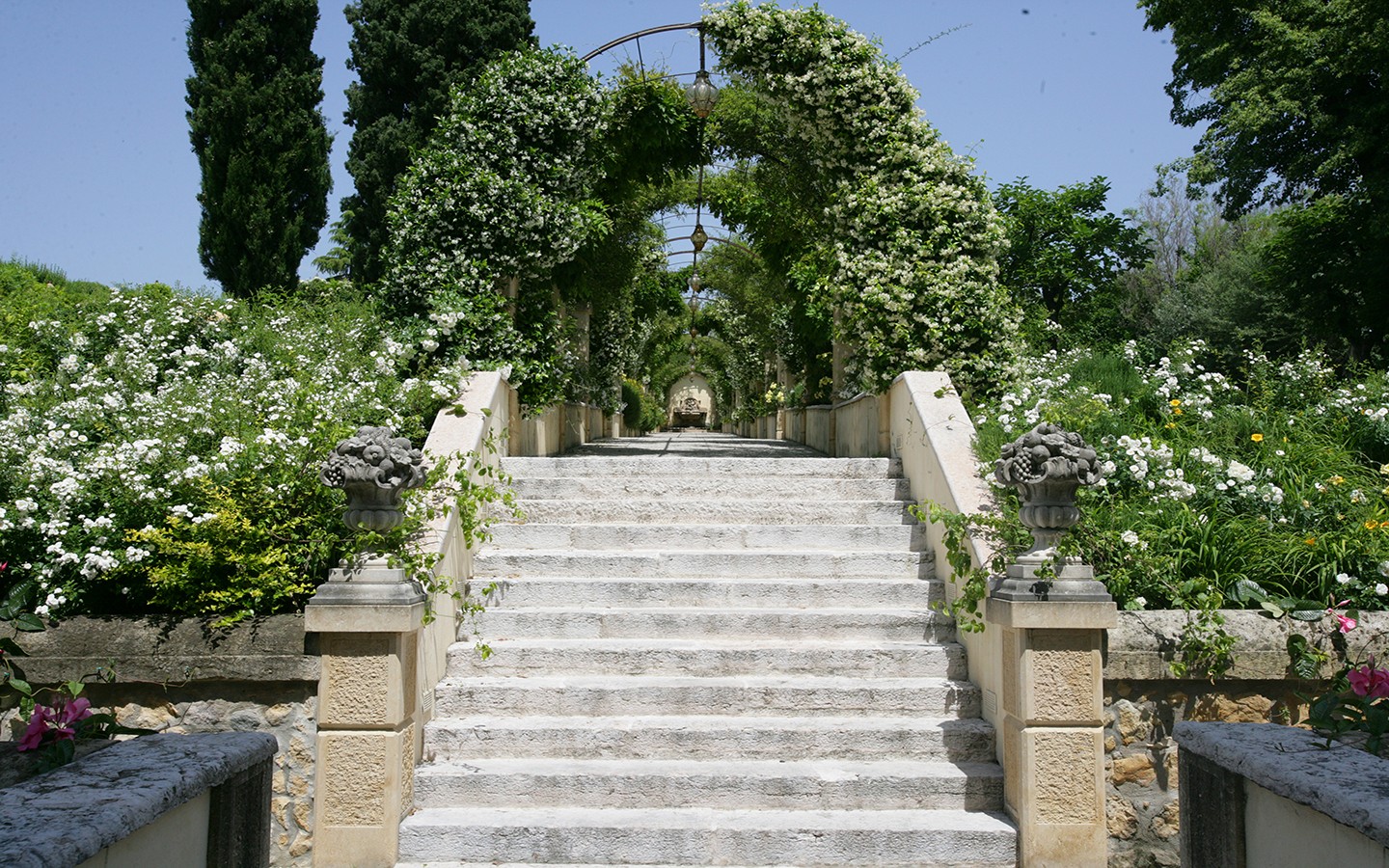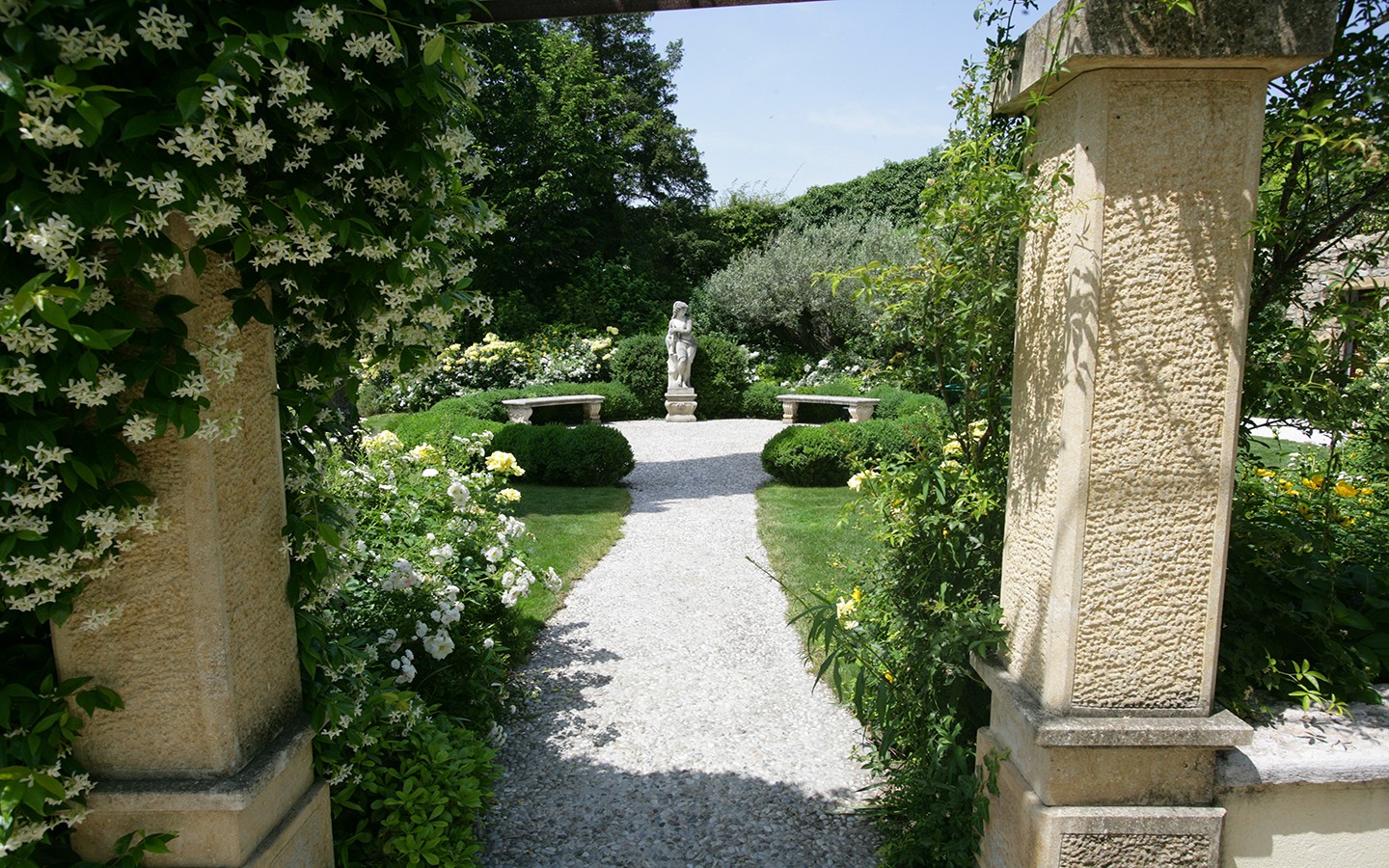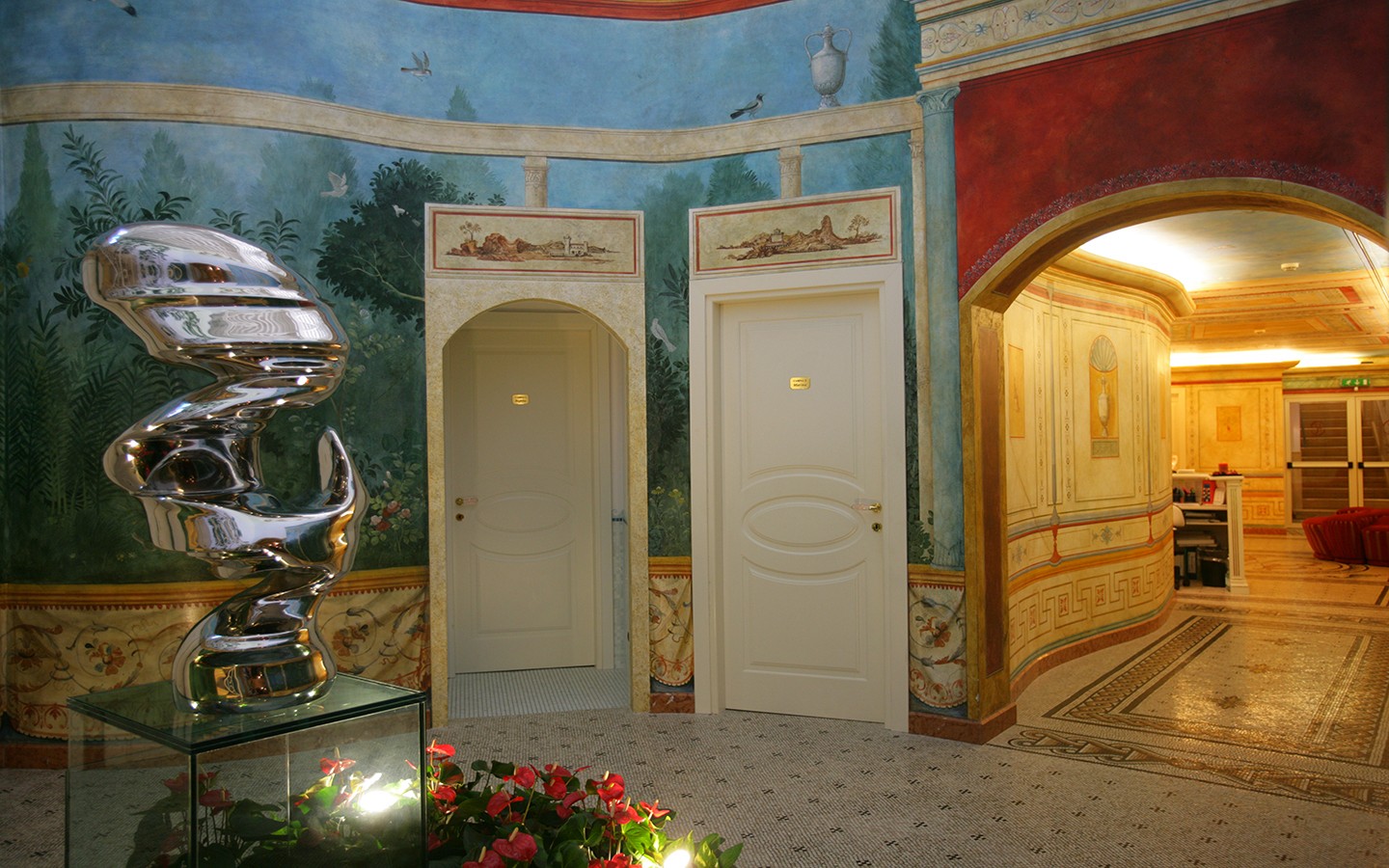For a hotel, a "Villeggiature Award" represents the ultimate achievement in hoteliering and hospitality and without doubt is the equivalent of winning an Oscar. The Byblos Art Hotel Villa Amistà in Verona received not one but two awards on the same night: for Best Graphic Identity and Best Landscaping of a Hotel in Europe. The fabulous 20,000-square meter park was transformed by Architect Gianfranco Paghera, incorporating marble fountains, water features and an elegant, classic-shaped vanishing edge swimming pool. These elements were key factors that tipped the scales for the members of the international jury made up of some of the best known specialist journalists writing in the industry in awarding this second prestige prix.
The unique landscaping and garden design of Villa Amistà triumphed over a very select shortlist of candidates in an award ceremony attended by more than 300 industry A-list names. We asked Architect Gianfranco Paghera to explain the concept behind the design of the gardens of the Byblos Art Hotel Villa Amistà in Verona and the message that he wanted to get over in creating a hotel garden conceived for hosting a permanent exhibition of contemporary art. This is his reply. "The thing that fascinated me most and that provided the key starting point for the project was the overlaying of the diverse architectural styles that form part of Villa Amistà. The main body of the villa dates back to the 5th century and was built on the remains of a Roman fortress designed by Architect Michele Sanmicheli, who opted for the Venetian Style, but the building was almost completely overhauled and refurbished during the 8th century by Ignazio Pellegrini. A further stylistic complement, successful because it exploits the net contrast between classic and modern, is the interior design created by designer Alessandro Mendini and the works of contemporary art. The very engaging visual coexistence of such diverse elements needed to be safeguarded without introducing further stylistic codes into the landscape design.
The ideal design solution was therefore to mirror the architecture of the villa without being too tied down by the previous garden layouts. Of course the numerous century-old trees were conserved and brought back to peak condition by selective and careful tree surgery. The classical garden "all'italiana", in vogue during the 18th century, was conserved for the prospective created for the path leading to the main entrance, paved in white stone culminating in a splendid fountain in red Verona marble that acts as a prelude to the magnificent façade of the villa. This fountain, as well as the plant pots that adorn the entrance path and the fountain with its putti decoration - framed by the optical telescope made up of a pergola - were created by craftsmen based on antique designs and are one-off, unique pieces.
The cottage market garden was reassigned its ancient purpose and has become a jubilee of scented herbs interplayed with peonies, roses and ..... These solutions show that it is possible to perfectly adapt a technologically advanced layout to a historical context, reflecting the ethos underpinning this operation of setting contemporary art against a 5th and 8th century backdrop. However, the success of this design is not based on the juxtaposition of the contrasts but rather on exploiting the harmonies. This is the forceful message that comes across not only in this project but also in all my work and which has always formed a focal point".
The unique landscaping and garden design of Villa Amistà triumphed over a very select shortlist of candidates in an award ceremony attended by more than 300 industry A-list names. We asked Architect Gianfranco Paghera to explain the concept behind the design of the gardens of the Byblos Art Hotel Villa Amistà in Verona and the message that he wanted to get over in creating a hotel garden conceived for hosting a permanent exhibition of contemporary art. This is his reply. "The thing that fascinated me most and that provided the key starting point for the project was the overlaying of the diverse architectural styles that form part of Villa Amistà. The main body of the villa dates back to the 5th century and was built on the remains of a Roman fortress designed by Architect Michele Sanmicheli, who opted for the Venetian Style, but the building was almost completely overhauled and refurbished during the 8th century by Ignazio Pellegrini. A further stylistic complement, successful because it exploits the net contrast between classic and modern, is the interior design created by designer Alessandro Mendini and the works of contemporary art. The very engaging visual coexistence of such diverse elements needed to be safeguarded without introducing further stylistic codes into the landscape design.
The ideal design solution was therefore to mirror the architecture of the villa without being too tied down by the previous garden layouts. Of course the numerous century-old trees were conserved and brought back to peak condition by selective and careful tree surgery. The classical garden "all'italiana", in vogue during the 18th century, was conserved for the prospective created for the path leading to the main entrance, paved in white stone culminating in a splendid fountain in red Verona marble that acts as a prelude to the magnificent façade of the villa. This fountain, as well as the plant pots that adorn the entrance path and the fountain with its putti decoration - framed by the optical telescope made up of a pergola - were created by craftsmen based on antique designs and are one-off, unique pieces.
The cottage market garden was reassigned its ancient purpose and has become a jubilee of scented herbs interplayed with peonies, roses and ..... These solutions show that it is possible to perfectly adapt a technologically advanced layout to a historical context, reflecting the ethos underpinning this operation of setting contemporary art against a 5th and 8th century backdrop. However, the success of this design is not based on the juxtaposition of the contrasts but rather on exploiting the harmonies. This is the forceful message that comes across not only in this project but also in all my work and which has always formed a focal point".








